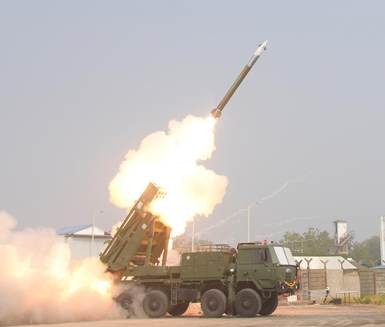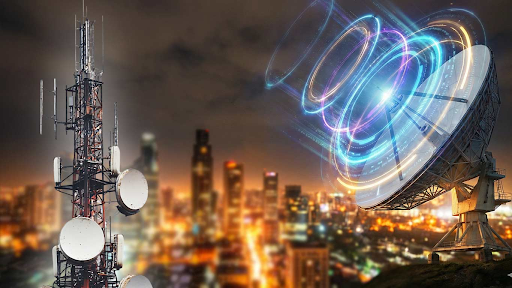



Building-Integrated Photovoltaics (BIPV) transforms structures into solar powerhouses, merging energy generation with building materials like facades, roofs, and windows. Ideal for India’s space-constrained cities, BIPV supports renewable goals but faces high costs, policy gaps, and low awareness. Promoting incentives, local manufacturing, and pilot projects can drive adoption, powering sustainable urban growth.

Copyright infringement not intended
Picture Courtesy: THE HINDU
Context:
BIPV systems transform buildings into clean energy generators by integrating solar technology into structural components.
It is a technology that integrates solar power generation directly into building materials.
Instead of just attaching solar panels on a roof, BIPV makes the building itself a solar power generator. The solar elements become part of the building's structure.
BIPV components serve two functions: they act as a building material and they generate electricity.
It utilizes existing building surfaces, eliminating the need for extra land.
Façades => The outer walls of a building can use semi-transparent BIPV panels. These act as curtain walls, generating power while also reducing heat gain.
Roofs => Traditional roofing materials like tiles or shingles can be replaced with BIPV versions.
Windows and Skylights => Transparent or semi-transparent BIPV panels can be used in windows and skylights, allowing natural light while generating electricity.
Other Structures => Balconies, canopies, railings, and even shading devices can be designed to include BIPV elements.
|
BIPV v/s Rooftop Solar (RTS) BIPV is more suitable for new construction or major renovations where it can be part of the design from the start. Rooftop panels offer more flexibility for existing buildings. While BIPV might have higher initial costs, it can offset some expenses by replacing conventional building materials. |
Addressing Space Constraints => In densely populated Indian cities with many high-rise buildings, rooftop space for traditional solar is limited. BIPV offers a way to use the entire building envelope – facades, windows, etc. – for power generation.
Urban Growth => A significant portion of India's urban infrastructure for 2047 is yet to be built. This presents a huge opportunity to incorporate BIPV into new constructions from the design stage.
Energy Targets => India has ambitious renewable energy goals, including a significant amount of solar capacity. BIPV is seen as an opportunty to help meet these targets, without needing additional land.
High Initial Costs => The upfront investment for BIPV can be higher than traditional building materials and rooftop solar.
Policy Gaps & Lack of Standards => There is a need for dedicated policies, clear standards, and incentives specifically for BIPV.
Low Awareness => Many architects, builders, and consumers are not fully aware of BIPV technology and its benefits.
Technical Capacity => There is a need to develop more technical expertise for designing and installing BIPV systems.
Reliance on Imports => India currently depends on imports for some BIPV components.
Expand Incentives => Offer more subsidies and financial support for BIPV, especially for commercial and industrial buildings.
Integrate into Building Codes => Include BIPV provisions into national and state building codes.
Promote Indigenous Manufacturing => Encourage local production of BIPV components through schemes like "Make in India."
Raise Awareness and Build Capacity => Conduct training programs for architects, builders, and policymakers.
Support Pilot Projects => Demonstrate BIPV feasibility through public-private partnerships in public infrastructure.
Develop Innovative Financing => Create financial models like Renewable Energy Service Companies (RESCOs) to make BIPV more accessible.
By prioritizing BIPV, India can transform its buildings into power-generating assets, contributing to its clean energy transition and sustainable urban development.
Must Read Articles:
India targets 50% clean energy, focusing on solar
Decreasing solar radiation affects efficiency of panels
Source:
|
PRACTICE QUESTION Q. What primary advantage does BIPV offer over traditional Rooftop Solar (RTS) systems in densely populated cities with high-rise buildings? A) BIPV requires less maintenance than RTS systems. B) BIPV offers greater aesthetic flexibility and customization. C) BIPV can utilize more building surface area for energy generation than the rooftop. D) BIPV technology has a higher energy conversion efficiency than RTS panels. Answer: C Explanation It is the primary advantage in the context of densely populated cities with high-rise buildings. In such environments, rooftop space is often limited relative to the building's overall energy demand and its vertical surface area. High-rise buildings have extensive facades (walls and windows) that can be utilized for solar energy generation with BIPV. Traditional RTS is limited to the often proportionally smaller rooftop. By integrating solar technology into facades, spandrels, windows, and other building surfaces, BIPV significantly expands the potential area for electricity generation. |









© 2026 iasgyan. All right reserved